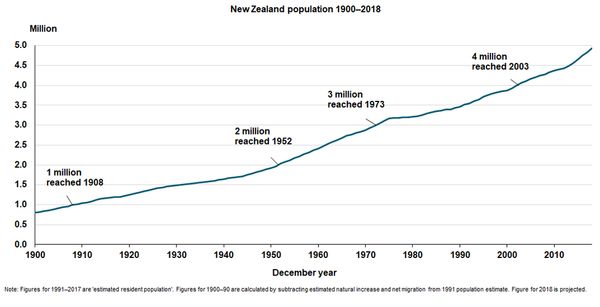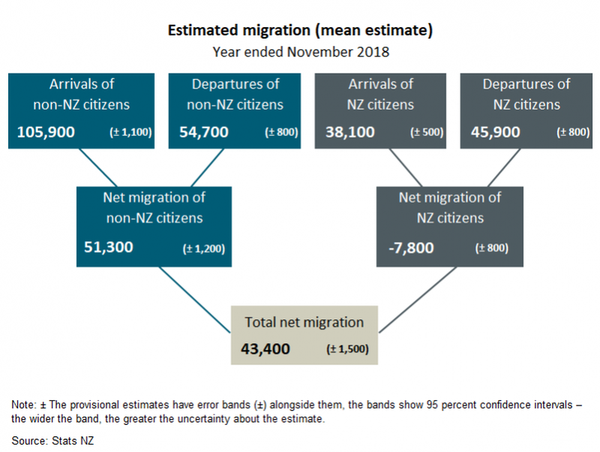
NZ Population Will Reach 5 Million in 2019 (The Fastest Growth Ever!)
In 1908 the country had just 1 million people living here. It took 44 years to reach 2 million (1952), 21 years (so fast due to the baby boom) from 2 million to 3 million (1973), 30 years to move from 3 million to 4 million (in 2003).
It took only about half that time (16 years) to increase population by another 1 million from 4 million to 5 million (in 2019). This is the fastest ever NZ population growth (i.e. one extra million people).
The latest 2016-base projections indicate that New Zealand will probably reach the 6 million mark in the mid-2040s. However, it could be as soon as the 2030s, particularly if migration remains at historically high levels.
I would not be surprised if we reach 6 million in about 10 years because the estimate for future growth sees the world population reaching 8.6 billion in 2030. As of February 2019, the world’s human population is estimated to be 7.6 billion.
The extra 1 billion people in just 10 years will have to sleep and live somewhere. New Zealand is often featured at the top of the Quality Living Survey ranks. That means the global demand for NZ housing is likely to outstrip the supply.
Average NZ household size is 2.7 people, according to Stats NZ. If NZ will accommodate an extra 1 million people, then we would have to build extra 370,000 properties by 2030 or 37,000 per year.
Annual New Zealand homes consented (not built!) was 33,000 in 2018.

Do you think we will hit this target to meet future demand by 2030?
By 2100 New Zealand Might Have More non-NZ Citizens than NZ Citizens.
Migration is a two-way street – more than 1 million (out of 5 million in total) people born overseas now live in New Zealand.
NZ lost 7,800 NZ citizens but gained 51,300 non-NZ citizens. That means total net annual migration was 43,400 of non-NZ citizens.
In 100 years if the same trend continues NZ will have an extra 4.34 million of non-NZ citizens. That’s almost the current population of New Zealand!
I’m not a statistician. You have to allow for birth, death and other migration factors. However, at the moment the citizens of this country think the grass is greener on the other side.

How common is that in other OECD countries?
P.S. Do you know of other people that will find this article useful? Please share it on social media. Thank you!